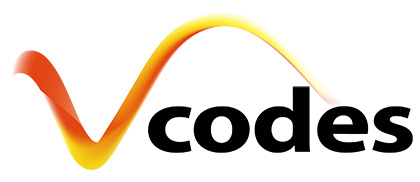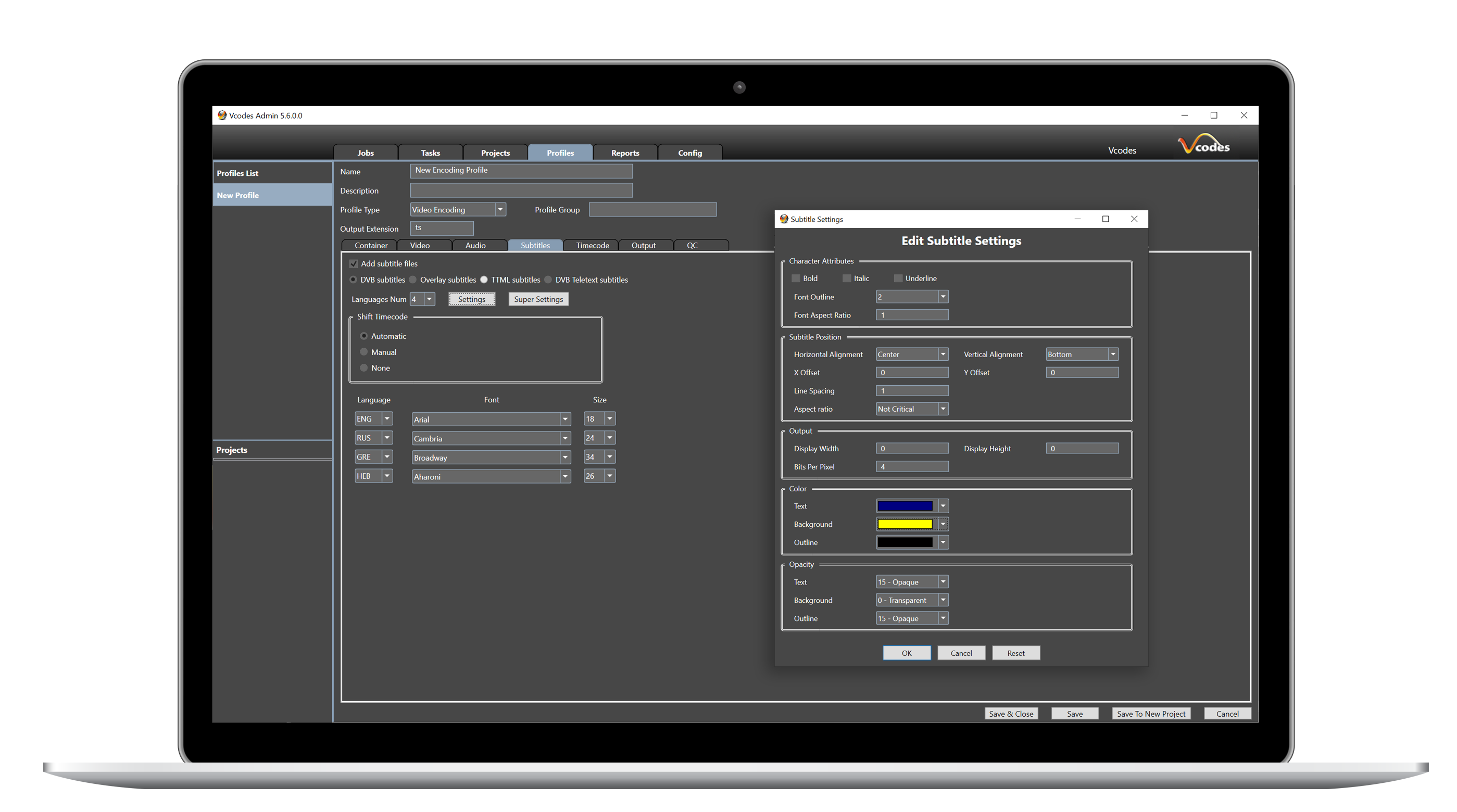Subtitling Workflows

Subtitle Insertion
Vcodes’ subtitling technology provides broadcasters with maximum flexibility for distribution of video content to the widest audience possible. Embedded into automated video workflows, the subtitling process is fully automated – from monitoring watch folders, through compatibility checks of subtitle files, time synchronization, conversion and insertion.
Subtitle Tracks
For traditional MPEG-TS CableLabs VOD files, DVB subtitles or Closed Captions (CC) are inserted as subtitle tracks, completely separate from the video data. This enables supporting multiple languages in a single video file, and allows end users to switch subtitles on and off. For streaming formats (MPEG-DASH, HLS), vCoder fully supports insertion of TTML/WebVTT subtitle tracks in all standard ISO languages.
Automatic Subtitle Ingest and Timecode Syncing
Vcodes may receive subtitle files directly from your Media Asset Management system. Subtitle files are checked for compliancy, converted into the proper end format, and synchronized to the video timecode.
Multiple languages subtitles are detected via naming conventions, supporting common text and binary formats like EBU, 890, PAC, STL, SRT and more, and are automatically assigned a subtitle workflow that is compatible with the output format. If it’s a transport stream, separate language tracks are created with the proper language descriptors. If it’s a format which supports only burnt-in subtitles (aka “overlay” or “open”), multiple output files are generated automatically, each with its own language subtitles printed in the video.
Powerful Subtitling Control
Unlike competing products which provide only basic subtitle insertion controls, Vcodes lets you fully control all aspects of the subtitle insertion process, including:
- Timecode sync, automatic to the video file or manual
- Supports all known languages
- Automatic detection of special attributes in supporting formats, like blackboxed subtitles, superimposed or positioning
- Separate controls for superimposed subtitles
- Full character attributes control
- Accurate positioning, line spacing and aspect ratio control
- Colors and opacity



